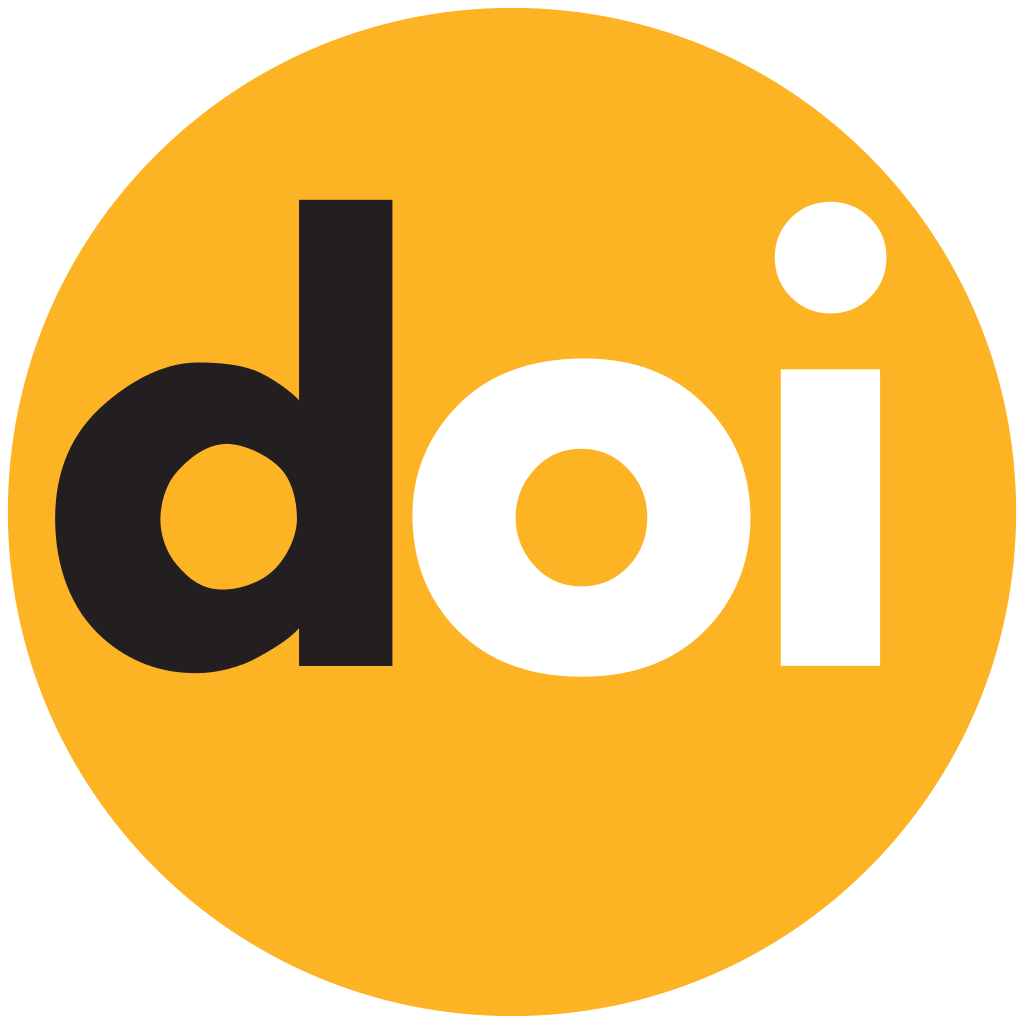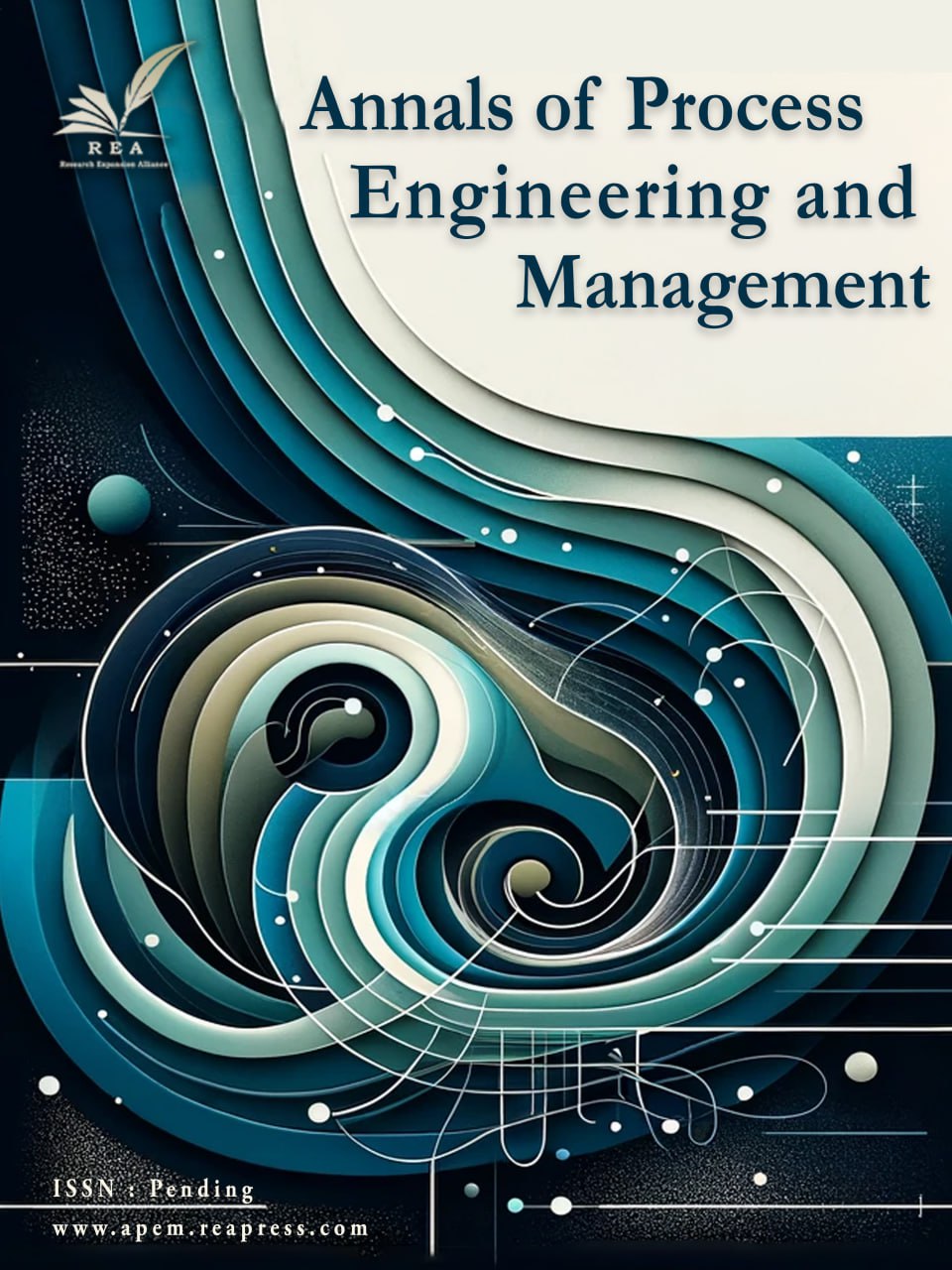AI-Generated Abstract Expressionism Inspiring Creativity through Ismail A Mageed's Internal Monologues in Poetic Form
Abstract
Artificial Intelligence (AI) has revolutionized the creative process, allowing for novel ways of artistic expression. This paper focuses on the intersection of Abstract Expressionism and AI-generated imagery, exploring how poetic prompts inspire unique visual interpretations. By utilizing Leonardo AI with a medium contrast and leveraging the cinematic kino model/preset, the research demonstrates how simple poetic phrases can yield profound visual artworks. The study evaluates the quality, creativity, and emotional resonance of AI-generated art, offering insights into the synergy between human creativity and machine intelligence within an Abstract Expressionism framework. The Leonardo AI is applied to Ismail A Mageed’s Internal Monologues in Poetic Form (IMPFs). The paper ends with some potential open problems and concludes with remarks and future research pathways.
Keywords:
Artificial intelligence, Abstract expressionism, Poetry, Creative collaboration, Leonardo AIReferences
- [1] Jie, P., Shan, X., & Chung, J. (2023). A comparative analysis between< Leonardo. Ai> and< Meshy> as AI texture generation tools. International journal of advanced culture technology, 11(4), 333–339. https://doi.org/10.17703/IJACT.2023.11.4.333
- [2] Mezei, P. (2021). From Leonardo to the next rembrandt–the need for AI-pessimism in the age of algorithms. UFITA archiv für medienrecht und medienwissenschaft, 84(2), 390–429. https://doi.org/10.5771/2568-9185-2020-2-390
- [3] Kurdi, G., Leo, J., Parsia, B., Sattler, U., & Al-Emari, S. (2020). A systematic review of automatic question generation for educational purposes. International journal of artificial intelligence in education, 30, 121–204. https://doi.org/10.1007/s40593-019-00186-y
- [4] Ruiz-Rojas, L. I., Acosta-Vargas, P., De-Moreta-Llovet, J., & Gonzalez-Rodriguez, M. (2023). Empowering education with generative artificial intelligence tools: approach with an instructional design matrix. Sustainability, 15(15), 11524. https://doi.org/10.3390/su151511524
- [5] Yildirim, E. (2023). Comparative analysis of leonardo AI, midjourney, and Dall-E: Ai’s perspective on future cities. Urbanizm: journal of urban planning & sustainable development, (28), 82-96. http://dx.doi.org/10.58225/urbanizm.2023-28-82-96
- [6] Bajohr, H. (2024). Operative ekphrasis: the collapse of the text/image distinction in multimodal AI. Word & image, 40(2), 77–90. https://doi.org/10.1080/02666286.2024.2330335
- [7] Mikalonytė, E. S., & Kneer, M. (2022). Can artificial intelligence make art?: folk intuitions as to whether AI-driven robots can be viewed as artists and produce art. ACM transactions on human-robot interaction (THRI), 11(4), 1–19. https://doi.org/10.1145/3530875
- [8] Pošćić, A., & Kreković, G. (2020). On the human role in generative art: A case study of AI-driven live coding. Journal of science and technology of the arts, 12(3), 45–62. https://doi.org/10.34632/jsta.2020.9488
- [9] Cetinic, E., & She, J. (2022). Understanding and creating art with AI: review and outlook. ACM transactions on multimedia computing, communications, and applications (TOMM), 18(2), 1–22. https://doi.org/10.1145/3475799
- [10] Shen, Y., & Yu, F. (2021). The influence of artificial intelligence on art design in the digital age. Scientific programming, 2021(1), 4838957. https://doi.org/10.1155/2021/4838957
- [11] Xu, X. (2024). A fuzzy control algorithm based on artificial intelligence for the fusion of traditional Chinese painting and AI painting. Scientific reports, 14(1), 17846. https://doi.org/10.1038/s41598-024-68375-x
- [12] Lehikoinen, K., & Tuittila, S. (2024). Arts‐based approaches for futures workshops: creating and interpreting artistic futures images. Futures & foresight science, 6(3), e182. https://doi.org/10.1002/ffo2.182
- [13] Dang, H., Mecke, L., Lehmann, F., Goller, S., & Buschek, D. (2022). How to prompt? opportunities and challenges of zero-and few-shot learning for human-AI interaction in creative applications of generative models. ArXiv preprint ArXiv:2209.01390. https://doi.org/10.48550/arXiv.2209.01390
- [14] Wang, M., Liu, Y., Liang, X., Huang, Y., Wang, D., Yang, X., Shen, S., Feng, S., Zhang, X., Guan, C., & Zhang, Y. (2024). Minstrel: structural prompt generation with multi-agents coordination for non-AI experts. ArXiv preprint ArXiv:2409.13449. https://doi.org/10.48550/arXiv.2409.13449
- [15] Kulkarni, N. D., & Tupsakhare, P. (2024). Crafting effective prompts: enhancing ai performance through structured input design. Journal of recent trends in computer science and engineering (JRTCSE), 12(5), 1–10. https://doi.org/10.70589/JRTCSE.2024.5.1
- [16] Park, D., An, G., Kamyod, C., & Kim, C. G. (2023). A study on performance improvement of prompt engineering for generative AI with a large language model. Journal of web engineering, 22(8), 1187–1206. https://doi.org/10.13052/jwe1540-9589.2285
- [17] Korzynski, P., Mazurek, G., Krzypkowska, P., & Kurasinski, A. (2023). Artificial intelligence prompt engineering as a new digital competence: analysis of generative AI technologies such as ChatGPT. Entrepreneurial business and economics review, 11(3), 25–37. https://www.ceeol.com/search/article-detail?id=1205908
- [18] Giannini, T., & Bowen, J. P. (2023). Generative art and computational imagination: integrating poetry and art. Proceedings of EVA London 2023 (pp. 211–219). BCS learning & development. https://www.scienceopen.com/hosted-document?doi=10.14236/ewic/EVA2023.37
- [19] Noel, G. P. J. C. (2024). Evaluating AI‐powered text‐to‐image generators for anatomical illustration: A comparative study. Anatomical sciences education, 17(5), 979–983. https://doi.org/10.1002/ase.2336
- [20] Dogoulis, P., Kordopatis-Zilos, G., Kompatsiaris, I., & Papadopoulos, S. (2023). Improving synthetically generated image detection in cross-concept settings. Proceedings of the 2nd ACM international workshop on multimedia AI against disinformation (pp. 28–35). Association for computing machinery. https://doi.org/10.1145/3592572.3592846
- [21] Cao, Y., Li, S., Liu, Y., Yan, Z., Dai, Y., Yu, P. S., & Sun, L. (2023). A comprehensive survey of AI-generated content (AIGC): A history of generative AI from gan to chatgpt. ArXiv Preprint ArXiv:2303.04226. https://doi.org/10.48550/arXiv.2303.04226
- [22] Ali, O., Murray, P. A., Momin, M., Dwivedi, Y. K., & Malik, T. (2024). The effects of artificial intelligence applications in educational settings: challenges and strategies. Technological forecasting and social change, 199, 123076. https://doi.org/10.1016/j.techfore.2023.123076
- [23] Chen, S. Y. (2023). Generative AI, learning and new literacies. Journal of educational technology development & exchange, 16(2), 1-19. https://doi.org/10.18785/jetde.1602.01
- [24] Wu, C. C., Song, R., Sakai, T., Cheng, W. F., Xie, X., & Lin, S. D. (2019). Evaluating image-inspired poetry generation. Natural language processing and chinese computing (pp. 539–551). Cham: springer international publishing. https://doi.org/10.1007/978-3-030-32233-5_42
- [25] Köbis, N., & Mossink, L. D. (2021). Artificial intelligence versus Maya Angelou: experimental evidence that people cannot differentiate AI-generated from human-written poetry. Computers in human behavior, 114, 106553. https://doi.org/10.1016/j.chb.2020.106553
- [26] Liu, B., Fu, J., Kato, M. P., & Yoshikawa, M. (2018). Beyond narrative description: generating poetry from images by multi-adversarial training. Proceedings of the 26th ACM international conference on multimedia (pp. 783–791). New York, NY, USA: association for computing machinery. https://doi.org/10.1145/3240508.3240587
- [27] Lyu, Y., Wang, X., Lin, R., & Wu, J. (2022). Communication in human–AI Co-creation: perceptual analysis of paintings generated by text-to-image system. Applied sciences, 12(22), 11312. https://doi.org/10.3390/app122211312
- [28] Abu Zaid, R. M. (2024). Poetry between human mindset and generative artificial intelligence: some relevant applications and implications. Bulletin of the faculty of languages & translation, 27(2), 303–332. https://doi.org/10.21608/bflt.2024.399196
- [29] Messer, U. (2024). Co-creating art with generative artificial intelligence: implications for artworks and artists. Computers in human behavior: artificial humans, 2(1), 100056. https://doi.org/10.1016/j.chbah.2024.100056
- [30] Jiang, H. H., Brown, L., Cheng, J., Khan, M., Gupta, A., Workman, D., Hanna, A., Flowers, J., & Gebru, T. (2023). AI art and its impact on artists. Proceedings of the 2023 AAAI/ACM conference on AI, ethics, and society (pp. 363–374). Association for computing machinery. https://doi.org/10.1145/3600211.3604681
- [31] Hong, J. W., & Curran, N. M. (2019). Artificial intelligence, artists, and art: attitudes toward artwork produced by humans vs. artificial intelligence. ACM transactions on multimedia computing, communications, and applications (TOMM), 15(2s), 1–16. https://dl.acm.org/doi/abs/10.1145/3326337
- [32] Lovato, J., Zimmerman, J. W., Smith, I., Dodds, P., & Karson, J. L. (2024). Foregrounding artist opinions: A survey study on transparency, ownership, and fairness in AI generative art. Proceedings of the AAAI/ACM conference on AI, ethics, and society. ArXiv. https://doi.org/10.48550/arXiv.2401.15497
- [33] Mikalonytundefined, E. S., & Kneer, M. (2022). Can artificial intelligence make art? folk intuitions as to whether AI-driven robots can be viewed as artists and produce art. ACM transactions on human-robot interaction, 11(4), 1–19. http://dx.doi.org/10.1145/3530875
- [34] Anscomb, C. (2024). AI: artistic collaborator?. AI & society. https://doi.org/10.1007/s00146-024-02083-y
- [35] Yadav, M., Kumar, M., Sahoo, A., & Rathnasiri, M. S. H. (2025). AI and the evolution of artistic expression: impacts on society and culture. In transforming cinema with artificial intelligence (pp. 15–36). IGI global scientific publishing. http://dx.doi.org/10.4018/979-8-3693-3916-9.ch002
- [36] Hutson, J., & Schnellmann, A. (2023). The poetry of prompts: the collaborative role of generative artificial intelligence in the creation of poetry and the anxiety of machine influence. Global journal of computer science and technology: D, 23(1). https://digitalcommons.lindenwood.edu/faculty-research-papers/462/
- [37] Rahmeh, H. (2023). Digital verses versus inked poetry: exploring readers’ response to AI-generated and human-authored sonnets. Sch int j linguist lit, 6(9), 372–382. https://B2n.ir/p10249
- [38] Raj, M., Berg, J., & Seamans, R. (2023). Art-ificial intelligence: the effect of AI disclosure on evaluations of creative content. ArXiv preprint ArXiv:2303.06217. https://doi.org/10.48550/arXiv.2303.06217
- [39] Shalevska, E. (2024). The digital laureate: examining AI-generated poetry. RATE Issues, Romanian association of teachers of English, 31(1). http://dx.doi.org/10.69475/RATEI.2024.1.1
- [40] Stiles, S. (2023). Ars autopoetica: on authorial intelligence, generative literature, and the future of language. In choreomata performance and performativity after AI (pp. 357–378). Chapman and Hall/CRC. https://doi.org/10.1201/9781003312338
- [41] Grassini, S., & Koivisto, M. (2024). Artificial creativity? evaluating AI against human performance in creative interpretation of visual stimuli. International journal of human–computer interaction, 1–12. https://doi.org/10.1080/10447318.2024.2345430
- [42] Chen, L., Xiao, S., Chen, Y., Sun, L., Childs, P. R. N., & Han, J. (2023). An artificial intelligence approach for interpreting creative combinational designs. Journal of engineering design, 1–28. https://doi.org/10.1080/09544828.2024.2377068
- [43] Grilli, L., & Pedota, M. (2024). Creativity and artificial intelligence: A multilevel perspective. Creativity and innovation management, 33(2), 234–247. https://doi.org/10.1111/caim.12580
- [44] Al-Zahrani, A. M. (2024). Balancing act: exploring the interplay between human judgment and artificial intelligence in problem-solving, creativity, and decision-making. Igmin research, 2(3), 145–158. https://www.igminresearch.com/articles/html/igmin158
- [45] Qamar, M. T., Yasmeen, J., Pathak, S. K., Sohail, S. S., Madsen, D. O., & Rangarajan, M. (2024). Big claims, low outcomes: fact checking ChatGPT’s efficacy in handling linguistic creativity and ambiguity. Cogent arts & humanities, 11(1), 2353984. https://doi.org/10.1080/23311983.2024.2353984
- [46] Gilchrist, B. (2022). Poetics of artificial intelligence in art practice:(Mis) apprehended bodies remixed as language. http://sure.sunderland.ac.uk/id/eprint/14711
- [47] da Silva, R. S. R., & de Carvalho, A. C. B. (2024). The creation of mathematical poems and song lyrics by (pre-service) teachers-with-AI as an aesthetic experience. Journal of digital life and learning, 4(1), 43–63. https://doi.org/10.51357/jdll.v4i1.279
- [48] Guo, A., Sathyanarayanan, S., Wang, L., Heer, J., & Zhang, A. (2024). From pen to prompt: how creative writers integrate AI into their writing practice. ArXiv Preprint ArXiv:2411.03137. https://doi.org/10.48550/arXiv.2411.03137
- [49] Strineholm, P. (2021). Exploring human-robot interaction through explainable AI poetry generation.
- [50] Chandrashekar, K., & Jangampet, V. D. (2021). Enhancing generative AI precision: adaptive prompt reinforcement learning for high-fidelity applications. International journal of computer engineering and technology (IJCET), 12(1), 81–90. https://iaeme.com/Home/issue/IJCET?Volume=12&Issue=1
- [51] Oppenlaender, J., Linder, R., & Silvennoinen, J. (2024). Prompting AI art: An investigation into the creative skill of prompt engineering. International journal of human–computer interaction, 1–23. https://doi.org/10.1080/10447318.2024.2431761
- [52] Ruiz, N., Li, Y., Jampani, V., Pritch, Y., Rubinstein, M., & Aberman, K. (2023). Dreambooth: fine tuning text-to-image diffusion models for subject-driven generation. Proceedings of the IEEE/CVF conference on computer vision and pattern recognition (pp. 22500–22510). arXiv:2208.12242v2. http://dx.doi.org/10.48550/arXiv.2208.12242
- [53] Nur, M. D. M., & Hartati, H. (2024). Utilization of leonardo ai in developing teaching materials for islamic religious education students: case study at ftik uin datokarama palu [presentation]. Proceeding of international conference on islamic and interdisciplinary studies (pp. 302–306). https://jurnal.uindatokarama.ac.id/index.php/iciis/article/view/3525
- [54] Po, R., Yifan, W., Golyanik, V., Aberman, K., Barron, J. T., Bermano, A., Chan, E., Dekel, T., Holynski, A., Kanazawa, A., Liu, C. K., Liu, L., Mildenhall, B., Nießner, M., Ommer, B., Theobalt, C., Wonka, P., & Wetzstein, G. (2024). State of the art on diffusion models for visual computing. Computer graphics forum, 43(2), e15063. https://doi.org/10.1111/cgf.15063


